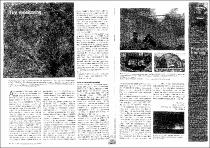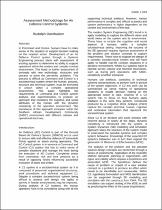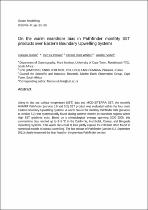JavaScript is disabled for your browser. Some features of this site may not work without it.
- ResearchSpace
- →
- Research Publications/Outputs
- →
- Conference Publications
- →
- View Item
| dc.contributor.author |
Oosthuizen, Rudolph

|
|
| dc.contributor.author |
Pretorius, L

|
|
| dc.date.accessioned | 2016-07-22T07:41:20Z | |
| dc.date.available | 2016-07-22T07:41:20Z | |
| dc.date.issued | 2015-06 | |
| dc.identifier.citation | Oosthuizen, R and Pretorius, L. 2015. Modelling the impact of technology on anti poaching command and control systems. In: International Association for Management of Technology, 8-11 June 2015, Stellenbosch | en_US |
| dc.identifier.uri | http://www.iamot2015.com/2015proceedings/documents/P011.pdf | |
| dc.identifier.uri | http://hdl.handle.net/10204/8678 | |
| dc.description | International Association for Management of Technology (IAMOT), 8-11 June 2015, Stellenbosch. Due to copyright restrictions, the attached PDF file only contains the abstract of the full text item. For access to the full text item, please consult the publisher's website | en_US |
| dc.description.abstract | Introducing a new technology into a complex sociotechnical system will have planned as well as unplanned impact. The need for a new technology may arise from new technology available for improved performance (technology push) or changes in the environment that makes the current system ineffective (technology pull). Often people in the system employ the technology differently than intended. Dynamic interaction between the technology, people and environment may also result in counter intuitive systemic effects. Modelling of the system and the new technology can help to understand the requirements for successful implementation of the technology. This paper proposes a modelling methodology that combines two modelling frameworks, Cognitive Work Analysis and System Dynamics, to model the effect of a new technology on complex sociotechnical system. Cognitive Work Analysis helps to convert available information on the system and the application of technology into constructs. The System Dynamics method analyses the causal relationships between the variables in the system. The aim of the modelling framework is to address the complex sociotechnical and dynamic effects between a new technology, people in the system and operational environment. The modelling methodology is demonstrated through modelling and simulation of the effect of web based and smartphone technology on an anti-poaching Command and Control system. The constructs and model artefacts developed with the methodology provided insight into the impact of the new technology to derive system requirements. This will assist in planning change management for its successful implementation | en_US |
| dc.language.iso | en | en_US |
| dc.publisher | International Association for Management of Technology (IAMOT) | en_US |
| dc.relation.ispartofseries | Worklist;15343 | |
| dc.subject | Complex sociotechnical systems | en_US |
| dc.subject | Cognitive work analysis | en_US |
| dc.subject | System dynamics | en_US |
| dc.subject | Pull systems | en_US |
| dc.subject | Push systems | en_US |
| dc.title | Modelling the impact of technology on anti poaching command and control systems | en_US |
| dc.type | Conference Presentation | en_US |
| dc.identifier.apacitation | Oosthuizen, R., & Pretorius, L. (2015). Modelling the impact of technology on anti poaching command and control systems. International Association for Management of Technology (IAMOT). http://hdl.handle.net/10204/8678 | en_ZA |
| dc.identifier.chicagocitation | Oosthuizen, Rudolph, and L Pretorius. "Modelling the impact of technology on anti poaching command and control systems." (2015): http://hdl.handle.net/10204/8678 | en_ZA |
| dc.identifier.vancouvercitation | Oosthuizen R, Pretorius L, Modelling the impact of technology on anti poaching command and control systems; International Association for Management of Technology (IAMOT); 2015. http://hdl.handle.net/10204/8678 . | en_ZA |
| dc.identifier.ris | TY - Conference Presentation AU - Oosthuizen, Rudolph AU - Pretorius, L AB - Introducing a new technology into a complex sociotechnical system will have planned as well as unplanned impact. The need for a new technology may arise from new technology available for improved performance (technology push) or changes in the environment that makes the current system ineffective (technology pull). Often people in the system employ the technology differently than intended. Dynamic interaction between the technology, people and environment may also result in counter intuitive systemic effects. Modelling of the system and the new technology can help to understand the requirements for successful implementation of the technology. This paper proposes a modelling methodology that combines two modelling frameworks, Cognitive Work Analysis and System Dynamics, to model the effect of a new technology on complex sociotechnical system. Cognitive Work Analysis helps to convert available information on the system and the application of technology into constructs. The System Dynamics method analyses the causal relationships between the variables in the system. The aim of the modelling framework is to address the complex sociotechnical and dynamic effects between a new technology, people in the system and operational environment. The modelling methodology is demonstrated through modelling and simulation of the effect of web based and smartphone technology on an anti-poaching Command and Control system. The constructs and model artefacts developed with the methodology provided insight into the impact of the new technology to derive system requirements. This will assist in planning change management for its successful implementation DA - 2015-06 DB - ResearchSpace DP - CSIR KW - Complex sociotechnical systems KW - Cognitive work analysis KW - System dynamics KW - Pull systems KW - Push systems LK - https://researchspace.csir.co.za PY - 2015 T1 - Modelling the impact of technology on anti poaching command and control systems TI - Modelling the impact of technology on anti poaching command and control systems UR - http://hdl.handle.net/10204/8678 ER - | en_ZA |









